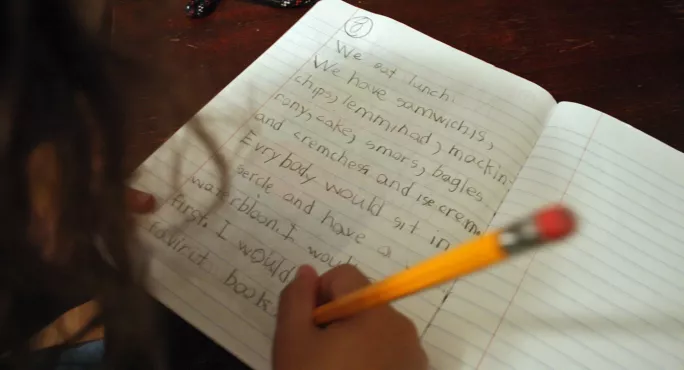- Home
- Teaching & Learning
- General
- What has happened to handwriting in lockdown?
What has happened to handwriting in lockdown?

There is far more to handwriting practice than simply making a piece of prose look more attractive.
Research suggests that practising handwriting regularly not only helps to facilitate higher levels of literacy but can also assist with the creation of original ideas and the retention of information.
However, for years, the importance of teaching handwriting has been undermined by the increased prevalence of computers. During the coronavirus lockdowns, as more and more learning moved online, this became even more pronounced. Given the remote nature of pandemic learning, it was harder than ever for teachers to ensure that their students were writing regularly and developing their handwriting skills.
Covid: The impact of lockdown on handwriting
According to an October 2020 report by Ofsted, detailing the findings of its recent visits to schools, primary leaders commented that writing was “an issue for some pupils, including writing at length, spelling, grammar, presentation, punctuation and handwriting”.
A November report by the inspectorate added that primary leaders found handwriting standards “had been affected by pupils’ time away” from the classroom.
So, does that mean that students have lost their handwriting stamina? And might this affect not only their literacy but also their ability to write as much as they need to when they next sit a writing-based exam?
Jo Atkinson, a handwriting expert and occupational therapist in the Faculty of Health Sciences at the University of Bradford, says that data is starting to emerge about the possible impacts of lockdown on children’s handwriting.
“My biggest fear is about their fundamental movement skills,” she says. “Many children have had so little opportunity for exercise over the last 10 months, and not all of them have a desk to work at. Some may be sitting in a bed for six or seven hours at a time, with their lungs squished up or a postural kyphosis.
“Are they going to have enough hip stability to sit at a desk and write?”
Read more:
- How to teach handwriting: a comprehensive guide
- Literacy: How to support pupils with literacy challenges at home
All of this combined with a decline in actual writing practice can contribute to a loss of writing stamina generally, Atkinson says.
“My thought is that, if children haven’t been keen on writing at home, then there is going to have to be a period of upskilling,” she continues.
“And it’s not just about the physical things, like whether they have got the required musculature around the thumb. It is also about whether they will be able to concentrate on the tasks in class, and be able to sit and focus on writing.”
Catch-up classes
The good news, Atkinson says, is that there is no reason why catch-up classes for those who have seen their writing deteriorate should not be effective.
“It is thought that the golden time for developing kinaesthetic acuity and awareness - that ability to know where your joints are - comes in the primary school years, up to about at the age of 11,” she says.
“But I have worked with some adults who’ve had handwriting difficulties, some who have had brain injuries for example, and they have been able to nail it.
“Somehow, the neural networks reintegrate, and they find a way to do it. My hope is that, with determined application, schools will be able to find some way around any problems with writing.”
Tes has a series of video tutorials around handwriting, featuring Sendco Nancy Gedge. Part one is below:
Atkinson also points to other reasons for hope, including a survey about writing habits published by the National Literacy Trust in June last year. The charity canvassed more than 4,100 children and young people aged 8 to 18 in the UK during the first national lockdown, and almost 60,000 in the three months leading up to it.
More than a fifth of respondents said they were writing more frequently during lockdown, while 27 per cent said they had written more in a diary or journal during that period.
“I think there are signs of hope about lockdown and its impact on handwriting skills,” Atkinson says. “But I am just very concerned about children and young people’s overall health and wellbeing, which are the things that a child needs in order to be able to write.
“Yes, they need stamina, they need to be able to form letters but they also need to be able to filter out sensory information in their environment - they need to be in the right frame of mind. My biggest worry is how lockdown might have impacted on that.”
Chris Parr is a freelance journalist
Register with Tes and you can read two free articles every month plus you'll have access to our range of award-winning newsletters.
topics in this article



